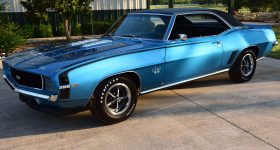Goodyear Tires: History and Key Models
For more than a century, Goodyear Tires has been a constant in the automotive industry. With its inception dating back to 1898, the brand has achieved global success and has established itself as one of the top tire manufacturers in the market.
Our article aims to delve into the historic origins of Goodyear tires and spotlight some of the essential tire models that differentiate Goodyear from other tire companies.
Goodyear history
Goodyear, a tire maker with a history dating back to the mid-1800s, began its journey with Charles Goodyear’s lucky discovery of how to vulcanize rubber. The company’s story is full of important milestones, amazing inventions, and a few hurdles.
One standout fact about Goodyear is its creation of the first air-filled tire in 1898, which was a major technological leap at the time. Before this, bumpy solid rubber tires were common. This new tire set off big changes in the car industry.
The company didn’t stop innovating there. In 1963, they came out with the first all-weather tire, which could handle both wet and dry conditions. This tire caught on quickly, and other tire companies began making them too.
Goodyear has had its fair share of ups and downs too. In the 80s, it faced major financial issues due to increased competition from overseas tire makers. To overcome this, Goodyear made some changes, like outsourcing some manufacturing, reducing its staff, and bringing out new products.
Goodyear values
One of Goodyear’s fundamental values is sustainability. The company has implemented several initiatives to reduce its carbon footprint, including investing in renewable energy and improving the energy efficiency of its production processes. Additionally, Goodyear is committed to reducing waste and increasing its products’ use of recycled materials.
Another significant value for Goodyear is safety. The company has a long history of developing cutting-edge safety technologies, such as its Eagle F1 Asymmetric 3 tire, recognized for its superior wet braking performance.
Goodyear key models
Regarding Goodyear key models, most people immediately think of familiar names like the Goodyear Eagle F1 or the Goodyear Wrangler. However, Goodyear has a wide range of models that are often overlooked despite their impressive features and unique characteristics:
- One such model is the Goodyear UltraGrip Performance 2, designed for optimal performance in winter and wet weather conditions. Its V-shaped tread pattern and many sipes allow for outstanding grip and traction on icy, slushy, and wet roads.
- Another under-the-radar model is the Goodyear EfficientGrip Performance, which has a low rolling resistance and reduced fuel consumption without compromising performance. It also features a reinforced construction for more extended wear and improved handling on dry and wet roads.
- For those needing run-flat tires, the Goodyear Eagle F1 Asymmetric 2 ROF is an excellent option. Its reinforced sidewall allows for continued driving even after a puncture or loss of pressure, giving a driver peace of mind on long journeys.
- The Goodyear Wrangler DuraTrac is another highly capable tire model. Its aggressive tread pattern and TractiveGroove Technology ensure excellent traction on loose and muddy surfaces, while its Armor Zone construction enhances durability and protection against punctures.
Overall, Goodyear offers a range of models to fit any driving experience.
Conclusion
After decades of producing superior, reliable tires, Goodyear still stands as a leader in the industry. Their commitment to quality craftsmanship at competitive prices has made them a favorite with consumers of all types for over 120 years. Since the first days, beginning in 1898, the iconic blimp design and multilingual “Goodyear” logo have been recognized worldwide. That same innovative spirit was applied to many game-changing products like the All-Weather Tread and Eagle F1 Asymmetric from the 1980s to our modern favorites such as the Assurance TripleTred and Ultra Grip, widely available nowadays.












